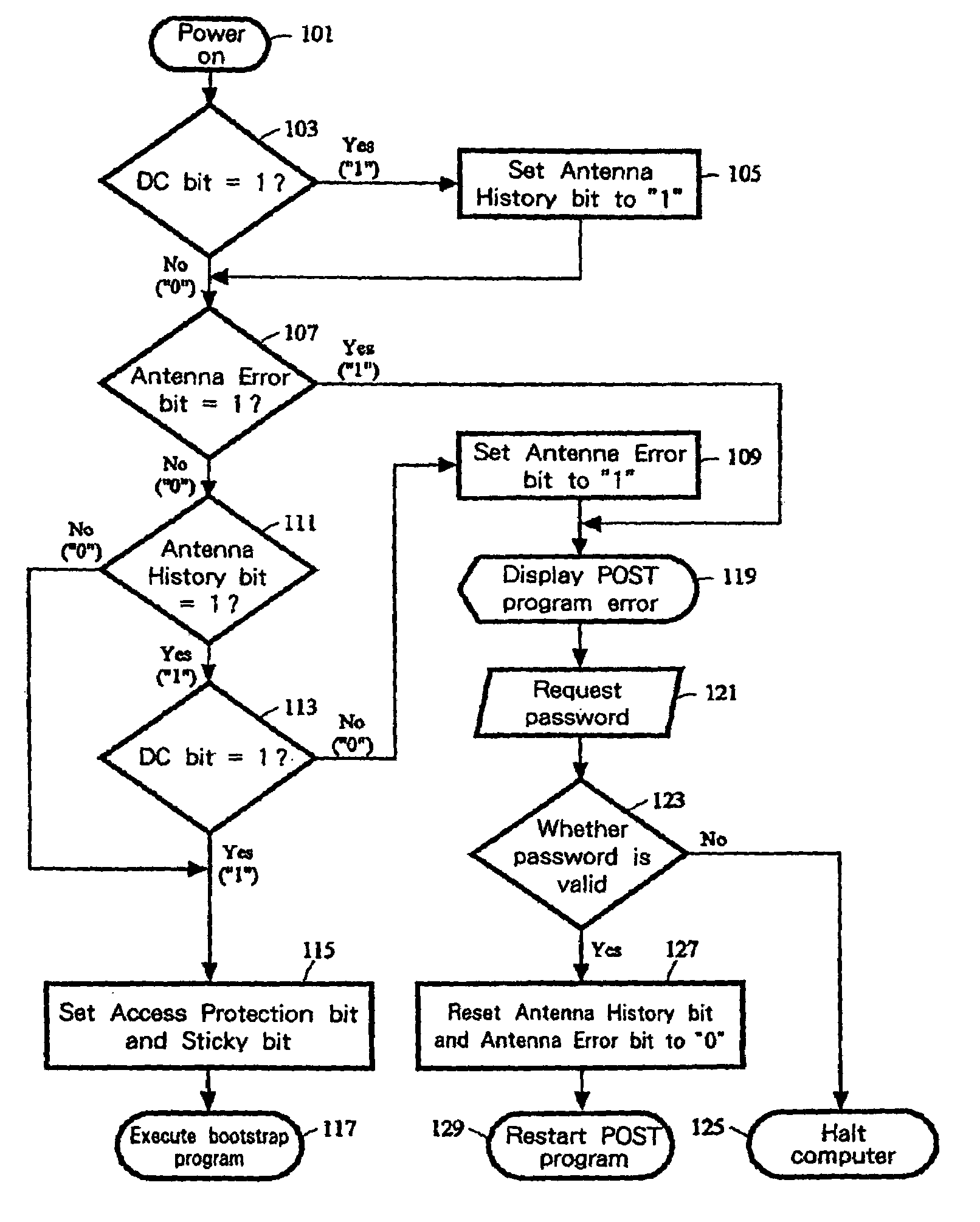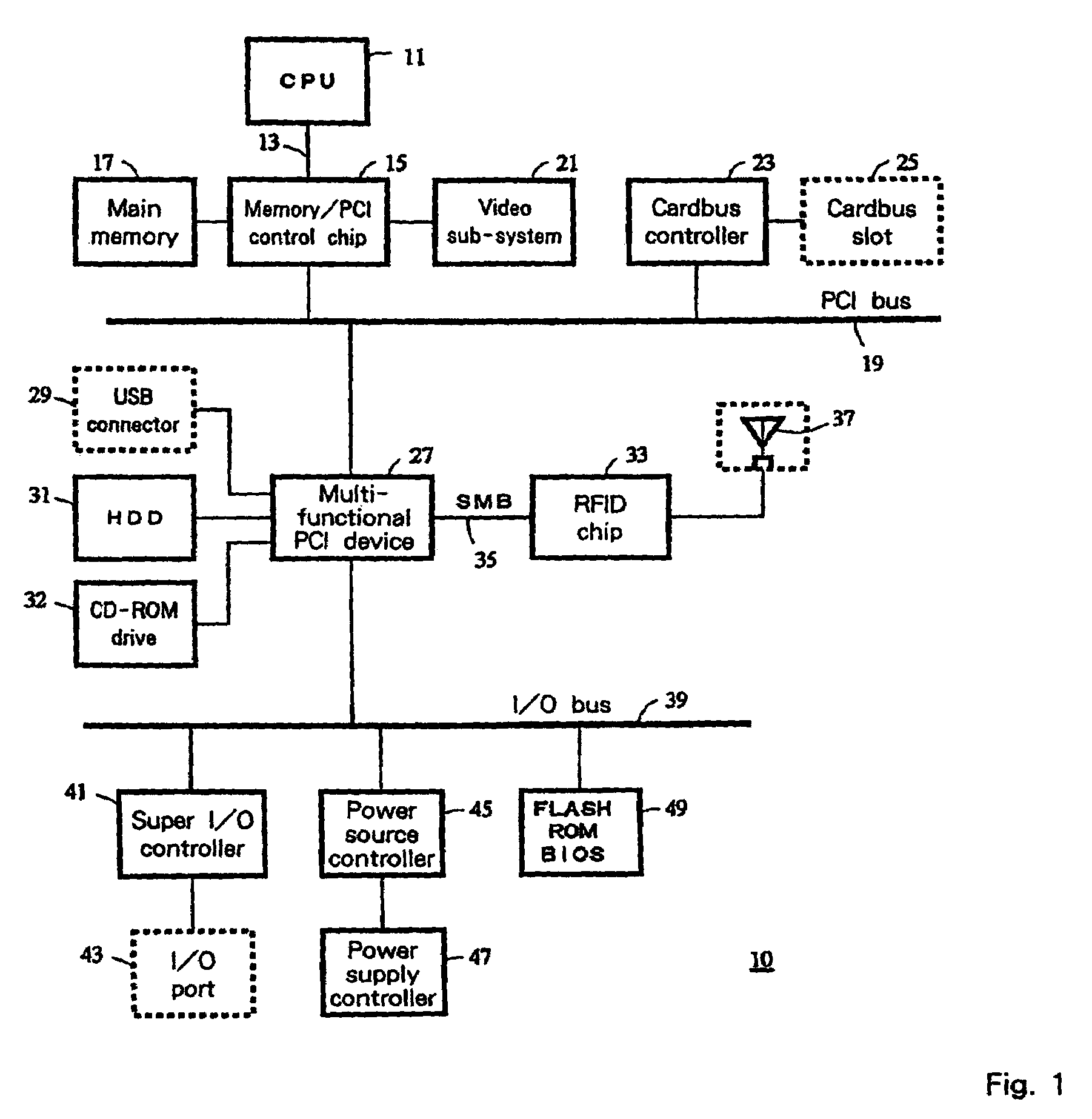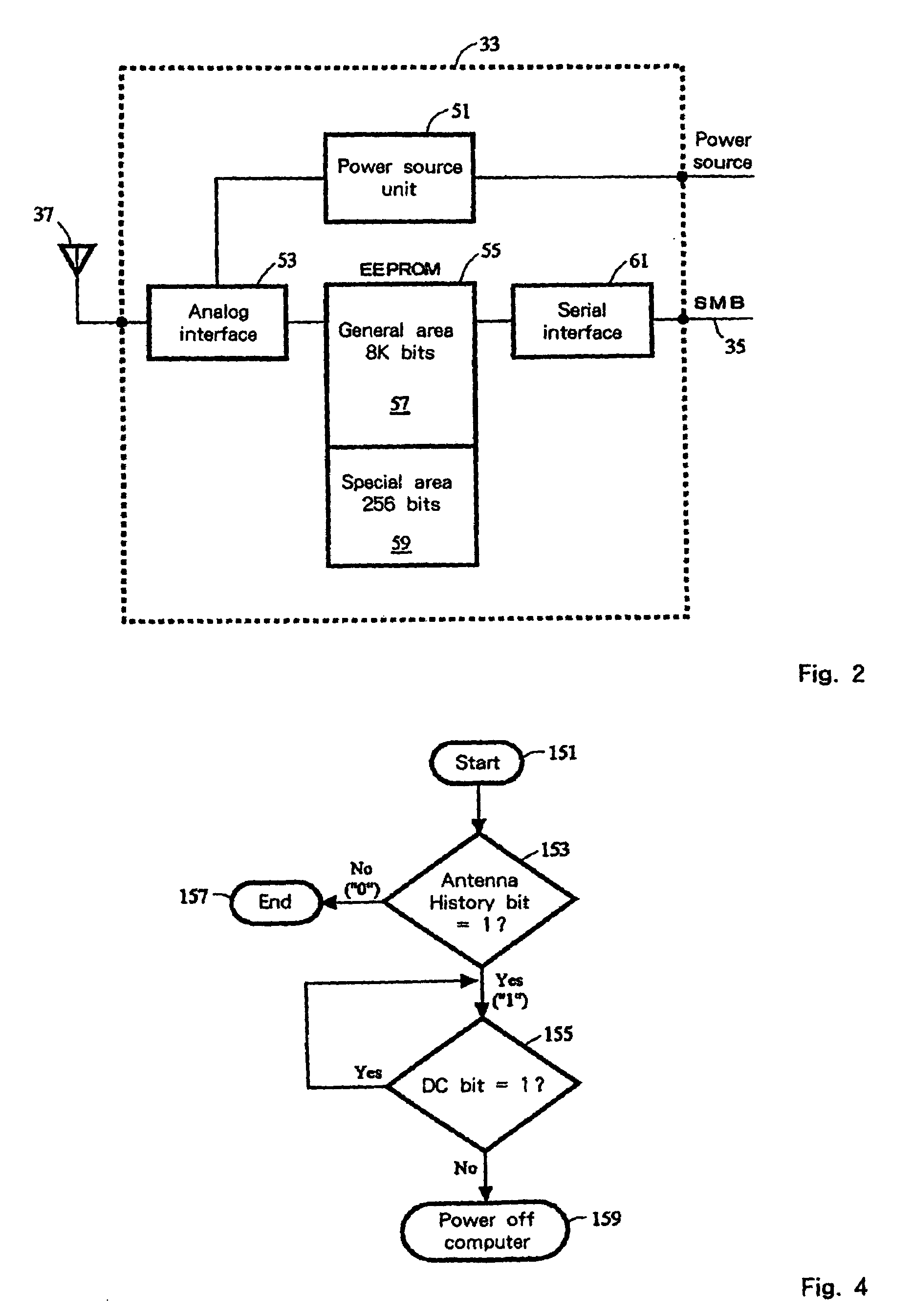Computer with security function and method therefor
a technology of security function and computer, applied in the field of computer security function and method therefor, can solve the problems of revealing information resources that can constitute a much more critical loss than the loss of physical resources, and no technique for attaching an rfid tag to a computer, and achieve the effect of extra space in a computer
- Summary
- Abstract
- Description
- Claims
- Application Information
AI Technical Summary
Benefits of technology
Problems solved by technology
Method used
Image
Examples
first embodiment
Procedure According to the Present Invention
[0042]FIG. 3 is a flowchart showing the procedure according to the first embodiment of the present invention. At this time, the system does not know whether an RF antenna 37 has actually been attached to the computer 10 to validate the security function. The Antenna History bit and the Antenna Error bit in the computer 10 are set to “0” when the computer is shipped from the factory. When at block 101 the computer 10 is powered on, the BIOS is read from the Flash ROM 49 to the main memory 17, and the CPU 11 reads the POST program and performs the following procedure. Since the Access Protection bit is set to “11” and the Sticky bit is always set to “1” in the RFID chip 33 when the power is switched on, the BIOS is permitted to access the general area 57. At block 103 the POST program sets the DE bit in the special area 59 to “1” in order to determine whether an RF antenna 37 is actually attached to the computer 10. In response to this, the ...
second embodiment
Procedure for the Present Invention
[0052]In the procedure described by the flowchart in FIG. 3, when an RF antenna is illegally removed from a computer that is in the power-ON state and the computer is carried away, access to the computer can not be prohibited unless the power is turned off and the POST program is executed. In order to prevent the removal of an RF antenna while the power is on, according to the second embodiment of the present invention the procedure shown in the flowchart in FIG. 4 is performed. When the power is turned on, the POST program is performed in a manner described in FIG. 3 and the bootstrap program is initiated, and then at block 151 the procedure of the second embodiment is begun by a device driver. At block 153 the Antenna History bit is examined. If an RF antenna 37 was attached to the computer when the current POST program was executed, at block 105 in FIG. 3 the Antenna History bit was set to “1.” Then, when at block 153 it is found that the Antenn...
PUM
 Login to View More
Login to View More Abstract
Description
Claims
Application Information
 Login to View More
Login to View More - R&D
- Intellectual Property
- Life Sciences
- Materials
- Tech Scout
- Unparalleled Data Quality
- Higher Quality Content
- 60% Fewer Hallucinations
Browse by: Latest US Patents, China's latest patents, Technical Efficacy Thesaurus, Application Domain, Technology Topic, Popular Technical Reports.
© 2025 PatSnap. All rights reserved.Legal|Privacy policy|Modern Slavery Act Transparency Statement|Sitemap|About US| Contact US: help@patsnap.com



